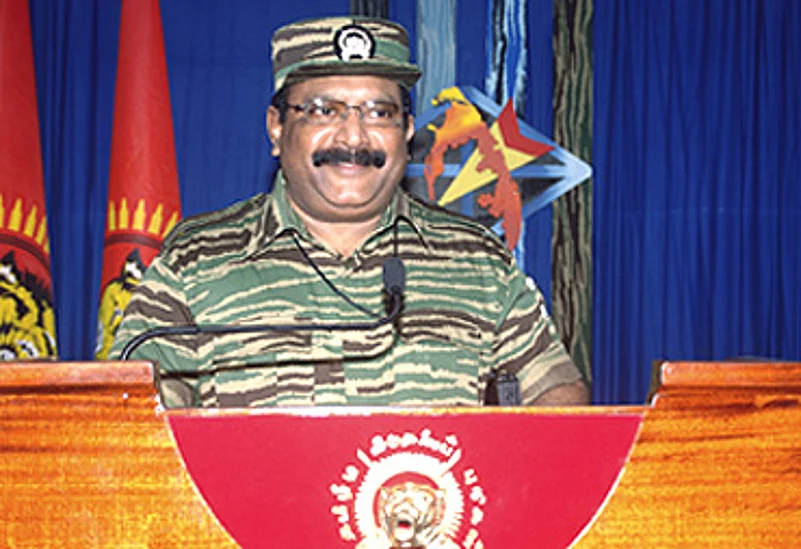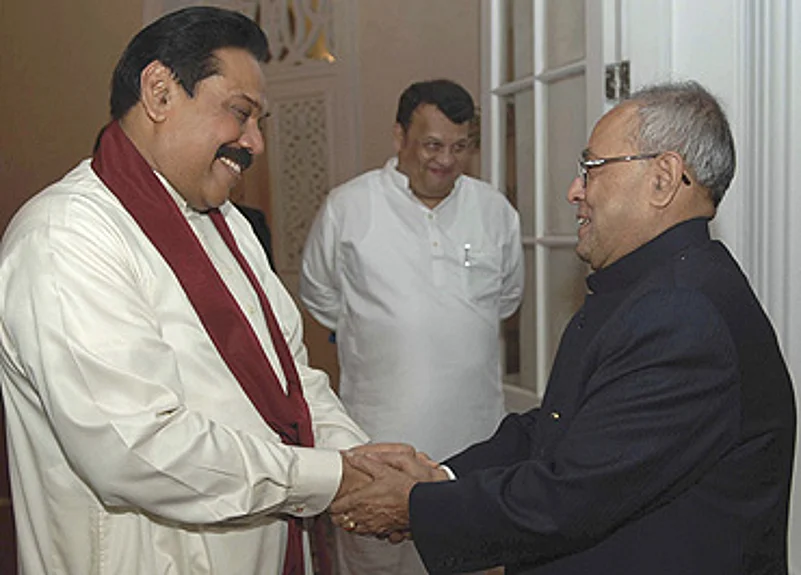
What’s the area still under the Tiger’s control?
As of January 26, 333 sq km, of which over 50 per cent is thick forest. Fairly contiguous, the largest forest cover is between two roads—A35 and A34—northwest of Mullaittivu. A smaller, thinner jungle lies northeast of the A35, extending north.
Where is LTTE supremo Prabhakaran?
Most experts feel he’s in the 333 sq km area, and they dismissed rumours that he took a boat or an LTTE plane to Southeast Asia.
Where could he be in the 333 sq km?
Most likely, experts say, in a large civilian settlement, where people are (a) willing to hide him; (b) not flee at the first opportunity; and (c) would willingly act as a human shield to him.
Advertisement
Wouldn’t it be better if Prabhakaran stayed in the forest?
Human settlements here are small and close to the roads. With Special Forces scourging the jungles, it’s not wise to hide there.
What is the total population in this 333 square kilometres?
Different UN estimates say between 2,30,000-3,00,000, who are his human shields.
Will the conflict end soon? What is a realistic date?
By 2009-end, the Lankan president said in December. Could now be much earlier. But Colombo can’t claim complete victory unless Prabhakaran is found, dead or alive. Till then, expect guerrilla war.
Will he be caught alive?
The man who has ordered many to bite the cyanide capsule should prefer death. Yet nobody will believe he’s dead unless his body is produced.
Advertisement
Why is India worried about the conflict in Lanka?
It fears that rising civilian casualties could roil sentiments in Tamil Nadu. Remember, this is an election year and the state sends 39 MPs.
What does India want done?
Colombo should initiate the political process at the earliest and jumpstart reconstruction efforts.
***

Till now, India has made no attempts to intervene in the war in Lanka. The Pranab-Rajapaksa talks saw the Lankan government issue fresh assurances, including more 'safe zones' for civilians. They even invited TN chief minister and DMK leader M. Karunanidhi and his arch rival, AIADMK leader J. Jayalalitha, for talks in Colombo. With just 333 sq km still out of its control, the Lankan government wants the Indian leaders to help convince the Tigers to surrender and bring a quick end to the conflict.
Jayalalitha promptly turned down the invitation, saying there was a greater chance of the LTTE accepting a ceasefire appeal if it came from Karunanidhi. The man has remained mum, but both the Congress leadership and the Tamil political spectrum are already speculating on the impact the Eelam war will have on India. As political analyst Mahesh Rangarajan puts it, "Jayalalitha has made the issue central by raising the question about Karunanidhi's patriotism...hinting at his links with the Tigers."
Officials present during Pranab's talks with Rajapaksa say the Indian leader stressed on his government's growing difficulty in ignoring the civilian casualties, especially in what is a crucial election year. The foreign minister also pointed out how Indian security forces operating in Kashmir have been given strict instructions on avoiding non-combatants in their battles against terrorists. Rangarajan, meanwhile, points to another issue arising from the LTTE's capitulation: "In the event of a total victory by the Lankan army, a large number of displaced Tamilians may end up seeking shelter in TN. The implications are huge."
Now if Colombo ignores India's advice, New Delhi can do little. This is of course linked to the flux in which the India-Lanka-LTTE triangle has always been. New Delhi first trained and financed the LTTE, then sent the IPKF to fight it, and ultimately adopted a hands-off policy in Sri Lanka following the Rajiv Gandhi assassination in 1991. As Natwar says, "Sri Lanka is an extremely important neighbour and our involvement there should have been much more than what it has been in the past few years."
India's decision to remain aloof from the messy affairs in Lanka inspired Pakistan and China to expand their influence in Colombo. A few years ago, there were even alarming reports of Pakistan supplying arms to Lanka. Others argue that India should have retained some influence there through the LTTE, particularly as it represented the resistance of the minority Tamilians against the domination of the majority Sinhalese.
South Block officials, however, dismiss such arguments. "Do we really want the LTTE to be our only source of influence in Sri Lanka?" asks a senior MEA official. New Delhi's hands were tied also because the LTTE was banned following the Rajiv Gandhi assassination. Could India logically support such an outfit, even as it tackled terrorism fomented from Pakistan in Kashmir? Worse, by then the LTTE had assassinated a lot many of its opponents in the community as well as Sinhalese politicians, including a head of state. A rising India couldn't possibly be seen as irresponsible by supporting a terror outfit. Says the senior MEA official, "The question to ask is: is it in India's interest to stop this war, especially when it is being waged against a terrorist outfit like the LTTE?"
Three factors, then, have determined the Indian diplomatic tightrope walk. Delhi wants to protect its strategic interests and counter China and Pakistan there. Second, it can't be a mute spectator to the plight of Tamilians there. Third, it agrees with Colombo that no peace is possible as long as Prabhakaran is alive and the LTTE remains a formidable fighting unit. The tightrope walk entailed supplying "non-offensive defence equipment" to Sri Lanka, training its army and providing the intelligence that was a crucial factor behind Colombo acquiring a decisive edge over the Tigers. Simultaneously, it seeks to nudge Colombo to address the grievances of the Tamilians. India will remain satisfied as long as its strategic interest is protected there. (For instance, as long as China and Pakistan are not allowed to build bases.) Unless, obviously, the situation spirals out of control in TN.
Tamil Nadu can get tricky as long as Prabhakaran remains alive. Until his dead body is produced or he surrenders, the LTTE supremo will continue to inspire fighters. "He will never surrender, he'll never wave the white flag, he'll never compromise," says M.R. Narayan Swamy, commentator and Prabhakaran's biographer. The LTTE cadre, he feels, will mix into the civilian populace for another deadly guerrilla war.
Advertisement

Lankan soldiers outside a damaged church in recaptured ‘rebel town’ Mullaittivu
So even as India believes the war is likely to end mid-April (the estimate is based on information Lanka has shared with India), it will still take months for the island's north to experience some kind of normalcy—one that Colombo considers good enough for elections, and introduction of the devolution package (autonomy under the 13th amendment to the Sri Lankan Constitution). The experiment has happened in the Eastern province, but it wasn't painless. Once the LTTE was routed here, elections were held in early 2008 and the people have chosen a Tamilian CM (ex-LTTE member S. Chandrakanthan who had rebelled against renegade Tiger Col Karuna). This process could be replicated in the north, though it must be said the people there are more committed to Prabhakaran. It could consequently take quite long to restore the democratic process.
A major problem in the north would be to find qualified people to fill the political vacuum. The LTTE has systematically wiped out almost all its political opponents, so there is a dearth of effective, astute Tamil politicians. The Tamil National Alliance (TNA), so far seen as a mouthpiece of the Tamil Tigers, may be an option. But South Block isn't sure whether the TNA can reinvent itself. There's also the issue of whether it is capable of taking effective steps to meet the aspiration of the Tamilians.
"We must remember that the LTTE did not create the Tamil problem, rather it was the failure of the Sri Lankan government to meet the demands of its Tamilian minority that created the LTTE," says Narayan Swamy. "The ethnic war in Lanka can only come to an end if Colombo succeeds in creating a proper nation-state instead of a Sinhalese majority state."



















